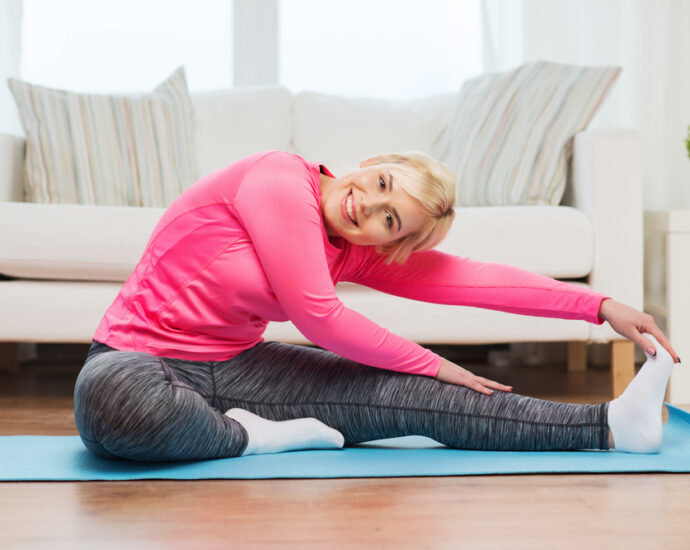Stretching is often an overlooked component of many people’s fitness routines, yet it plays a crucial role in improving flexibility, preventing injuries, and enhancing overall health and well-being. Incorporating regular stretching exercises into your fitness regimen can lead to a wide range of benefits that extend beyond just flexibility. In this article, we will explore why stretching is essential for fitness and how it can help you achieve better health and fitness outcomes.
Page Contents
Stretching Benefits
- Improved Flexibility and Range of Motion: Stretching helps improve flexibility by lengthening and loosening tight muscles, tendons, and ligaments. Increased flexibility allows for better range of motion in joints, which can enhance athletic performance, reduce the risk of injuries, and support proper posture and alignment.
- Injury Prevention: Regular stretching can help prevent injuries by increasing muscle elasticity and reducing muscle tension. By improving flexibility and joint mobility, stretching prepares the body for physical activities and reduces the likelihood of strains, sprains, and other musculoskeletal injuries.
- Enhanced Muscle Recovery: Stretching after a workout can aid in muscle recovery by promoting blood flow to the muscles, flushing out toxins, and reducing muscle soreness. Stretching helps relax tight muscles and prevent stiffness, allowing for faster recovery and improved muscle function.
- Improved Posture and Alignment: Stretching exercises that target muscles responsible for posture, such as the back, shoulders, and hips, can help correct imbalances, reduce muscle tightness, and improve alignment. Better posture not only enhances physical appearance but also reduces the risk of back pain and other postural issues.
- Stress Relief and Relaxation: Stretching can be a great way to unwind, relax, and relieve stress after a long day. Gentle stretching exercises can help calm the mind, reduce tension in the body, and promote a sense of relaxation and well-being, making it a valuable tool for overall mental and physical health.
- Improved Circulation and Energy Levels: Stretching exercises increase blood flow to the muscles, improving circulation and delivering oxygen and nutrients throughout the body. Enhanced circulation can boost energy levels, reduce fatigue, and promote overall vitality and well-being.
- Enhanced Athletic Performance: Incorporating dynamic stretching into pre-workout routines can help prepare the body for physical activity, improve muscle coordination and performance, and optimize athletic performance. Dynamic stretching involves moving through a range of motion to warm up the muscles and prepare them for activity.
In conclusion, stretching is an essential component of a well-rounded fitness routine that offers numerous benefits for both physical and mental health. By incorporating regular stretching exercises into your fitness regimen, you can improve flexibility, prevent injuries, enhance muscle recovery, promote relaxation, and support overall health and fitness goals. Whether you’re a seasoned athlete or a fitness enthusiast, don’t underestimate the power of stretching in helping you stretch your way to better health and fitness.
There are several easy ways to incorporate stretching into your daily routine.
Here are some simple stretching techniques that can help improve flexibility and promote relaxation:
- Neck Stretch: Gently tilt your head to one side, bringing your ear towards your shoulder until you feel a stretch along the side of your neck. Hold for 15-30 seconds and then switch sides.
- Shoulder Stretch: Bring one arm across your body at chest level and use your other hand to gently press the arm closer to your chest, feeling a stretch in the shoulder. Hold for 15-30 seconds and then switch arms.
- Hamstring Stretch: Sit on the floor with one leg extended straight out in front of you and the other leg bent. Lean forward from your hips, reaching towards your toes on the extended leg until you feel a stretch in the back of the thigh. Hold for 15-30 seconds and then switch legs.
- Calf Stretch: Stand facing a wall with one foot in front of the other and both knees slightly bent. Lean forward, placing your hands on the wall for support, and press the back heel towards the floor until you feel a stretch in the calf of the back leg. Hold for 15-30 seconds and then switch legs.
- Quadriceps Stretch: Stand on one leg and bring the other foot up towards your buttocks, grabbing the ankle or foot with your hand. Gently pull the foot towards your body until you feel a stretch in the front of the thigh. Hold for 15-30 seconds and then switch legs.
- Trunk Rotation Stretch: Sit on the floor with your legs extended straight out in front of you. Cross one leg over the other and place the opposite elbow on the outside of the bent knee, twisting gently to look over your shoulder. Hold for 15-30 seconds and then switch sides.
- Child’s Pose: Start on your hands and knees, then sit back on your heels with your arms extended in front of you, lowering your forehead to the floor. Relax into the stretch, feeling a gentle stretch along your back and shoulders. Hold for 30 seconds to 1 minute.
Remember to breathe deeply and slowly while stretching, and never push your body into painful positions. Stretching should feel comfortable and relaxing, allowing you to gradually increase your flexibility over time. Incorporating these easy stretching exercises into your daily routine can help improve flexibility, reduce muscle tension, and promote overall well-being.
READ MORE: Exercises That Work Most Muscle Groups
Sources:
https://www.mayoclinic.org/healthy-lifestyle/fitness/in-depth/stretching/art-20047931
https://healthsurgeon.com/health/lifestyle-factors-that-support-a-healthy-back-weight-posture-and-more/
https://www.medicalnewstoday.com/articles/dynamic-stretching
